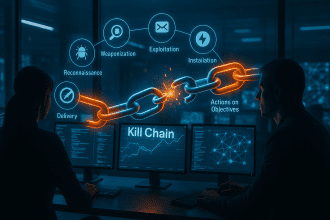SandboxAQ warns: AI’s rise amplifies cyber risk secure identities
AI isn’t just moving fast it’s rewriting the rules. Everything’s accelerating work, creativity, even the chaos. And while that’s exciting, it’s also dangerous. The same AI that helps us build faster code can just as easily help someone break into it. That’s the trade-off we’re living with now.
Experts everywhere are warning the same thing: without smart, AI-aware security, today’s miracle could become tomorrow’s mess.
We love AI because it saves time and multiplies our potential. But crooks love it too. They’re spinning up scams, fake voices, and deep fakes that fool even trained eyes. Europol’s reports sound almost fictional but it’s all happening.
And AI? It’s not just a tool anymore; it’s a co-worker. It logs in, moves files, talks to systems. Every action runs on a “non-human identity,” a digital pass that’s multiplying faster than anyone can count. Lose track of those, and you’ve basically left your digital keys under the mat.
The bad guys aren’t slowing down either. Phishing, malware, prompt injections it’s all blending together into a new kind of cyber chaos. MITRE’s ATLAS tracks every move, building a kind of roadmap for AI warfare. Security has to go deeper now protecting not just the network, but the models themselves.
Firewalls can’t see poisoned datasets. Signature tools can’t spot a malicious prompt. It’s outdated tech fighting modern problems. The fix? Treat AI like mission critical infrastructure. Not an experiment.
Right now, the risk list feels endless: poisoned data, model theft, fake identities, unapproved AI tools. It’s messy, sure but not hopeless.
The fix starts simple. Map your models. Red-team them. Add brokers between agents and tools. Rotate tokens like clockwork. Log everything. Use NIST’s governance as your foundation. It’s not glamorous but it works.
Most companies already run AI but protect it like a side project. That’s dangerous. You can’t guard what you don’t treat seriously.
Quantum computing isn’t here yet, but its shadow is. Encryption has to evolve fast. Smart teams are testing new cryptography now before the scramble starts.
Leaders, this part’s for you. Create a registry. Manage machine identities. Add brokers. Red team everything. Build policies from NIST’s framework. It’s not about paranoia it’s about staying in the game.
AI’s speed isn’t the enemy. Neglect is. We can have both innovation and safety if we build the right guardrails. The real winners won’t be those who deploy AI first they’ll be the ones who secure it best.






















